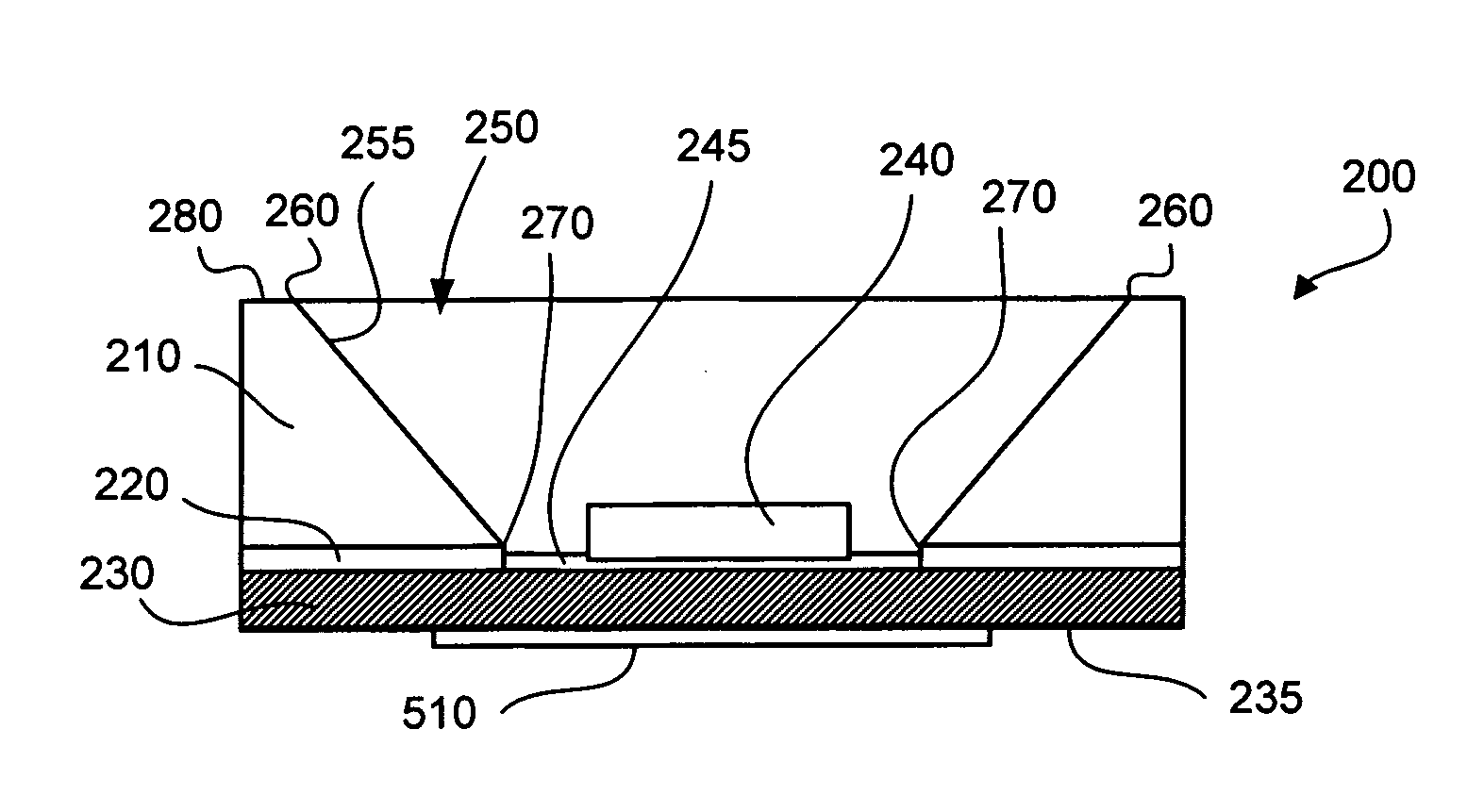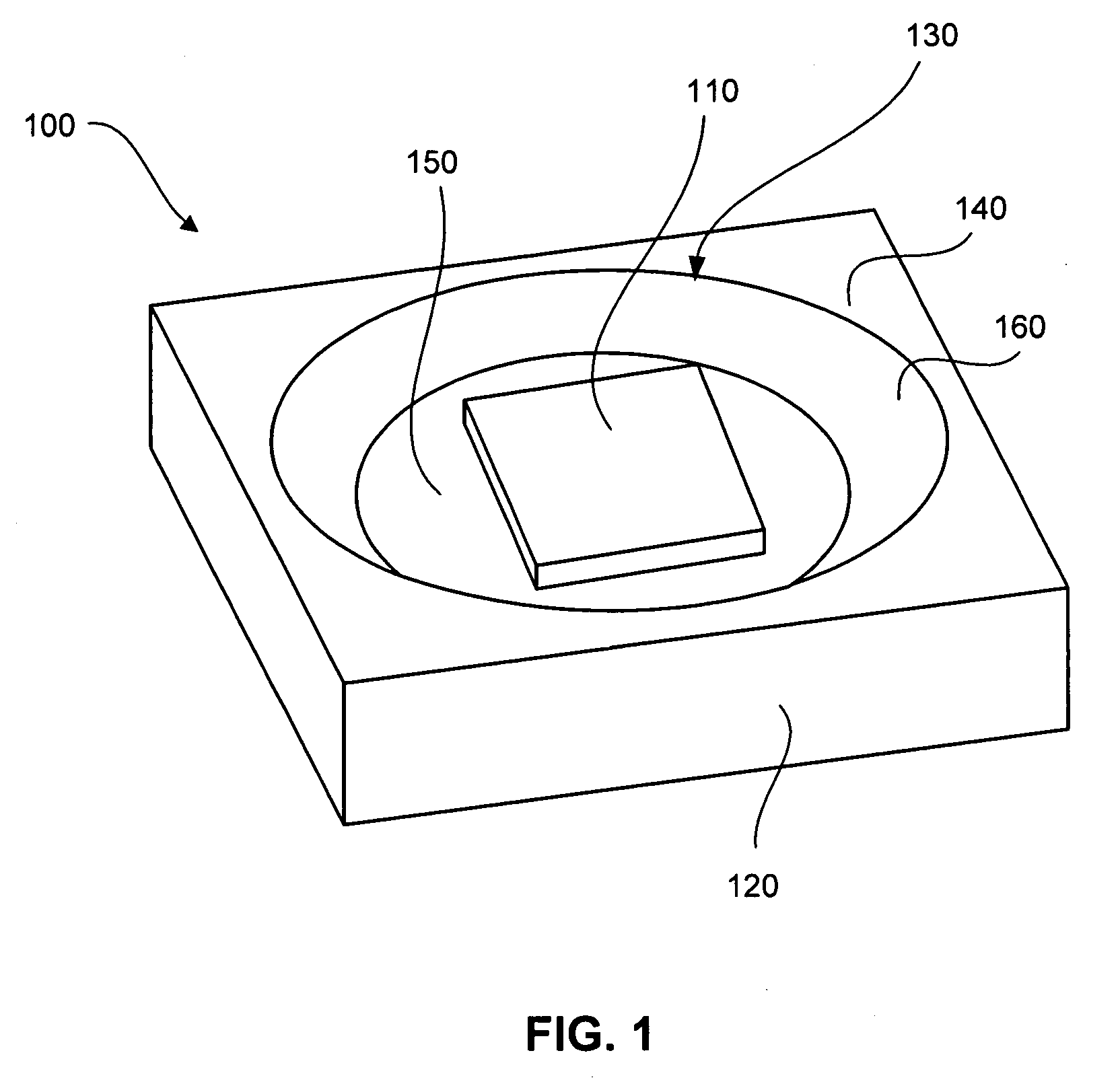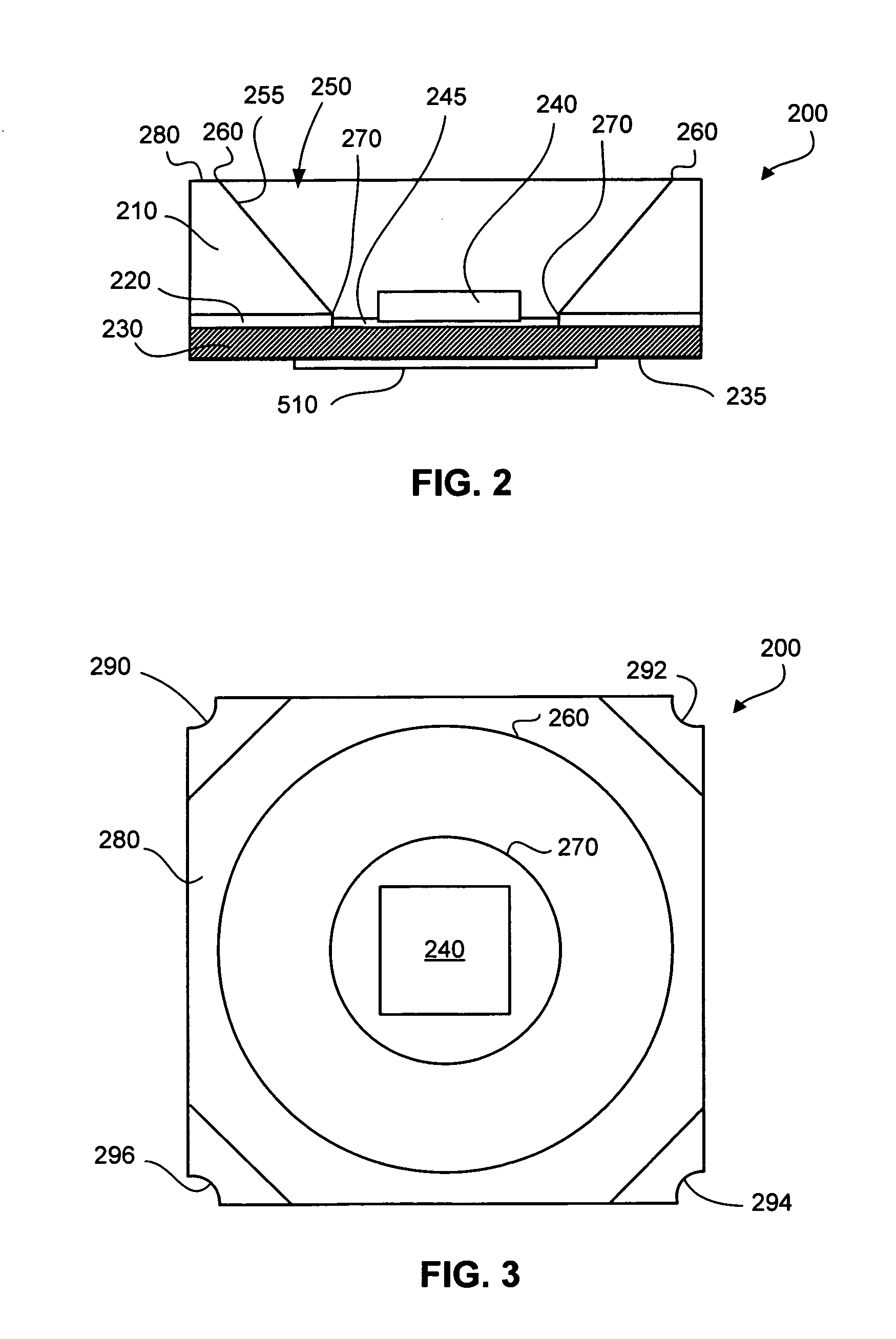LED package with structure and materials for high heat dissipation
a technology of led chips and packaging, applied in the direction of electrical equipment, semiconductor devices, semiconductor/solid-state device details, etc., can solve the problems of limited use of led chips, prior art packages providing inadequate heat dissipation away from led dies, and current led packages cannot handle the high-power density of led chips. achieve the effect of improving heat dissipation, low fracture toughness, and small footprin
- Summary
- Abstract
- Description
- Claims
- Application Information
AI Technical Summary
Benefits of technology
Problems solved by technology
Method used
Image
Examples
Embodiment Construction
1. An Overview
[0028]The present disclosure provides LED packages with structures and materials that provide higher heat dissipation than presently available. A further benefit of the present invention is improved matching of the coefficients of thermal expansion (CTEs) of the LED dies and the materials to which they are bonded for higher reliability. Due to the improved heat conduction, the packages of the present invention allow high-power LEDs to operate at full capacity. Improved heat conduction also allows for both smaller packages and devices within which packages are placed more closely together.
[0029]One measure of how efficiently a package dissipates heat is the temperature rise across the package. Using this measure, in current high-power LED packages the thermal resistance from the junction to the case is generally in the range of 15 to 20° C. / W. By comparison, an exemplary embodiment of the present disclosure has a lower thermal resistance of only about 6° C. / W or 3° C. / W...
PUM
| Property | Measurement | Unit |
|---|---|---|
| distance | aaaaa | aaaaa |
| wavelengths | aaaaa | aaaaa |
| power | aaaaa | aaaaa |
Abstract
Description
Claims
Application Information
 Login to View More
Login to View More - R&D
- Intellectual Property
- Life Sciences
- Materials
- Tech Scout
- Unparalleled Data Quality
- Higher Quality Content
- 60% Fewer Hallucinations
Browse by: Latest US Patents, China's latest patents, Technical Efficacy Thesaurus, Application Domain, Technology Topic, Popular Technical Reports.
© 2025 PatSnap. All rights reserved.Legal|Privacy policy|Modern Slavery Act Transparency Statement|Sitemap|About US| Contact US: help@patsnap.com



